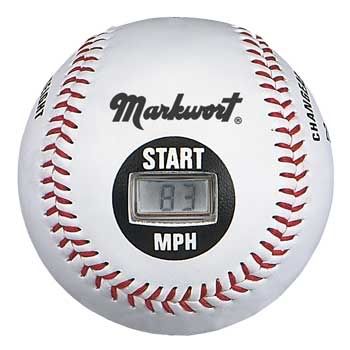Does anyone else think that Fox's new emphasis on pitch speed at the plate is a bunch of hooey?
The RADAR guns sit elevated above field level. Out of the pitcher's hand, the guns get a read on the pitch pretty close to straight on.
At the plate, though, the gun reading is going to have more of a downward angle. If you remember studying vectors in high school physics, you can understand why the readings at the plate might be lower than actual speeds.
Is there no one at Fox who took science in high school?
There's no way a fastball drops 8 mph over a span of 55 feet.
Original Post




